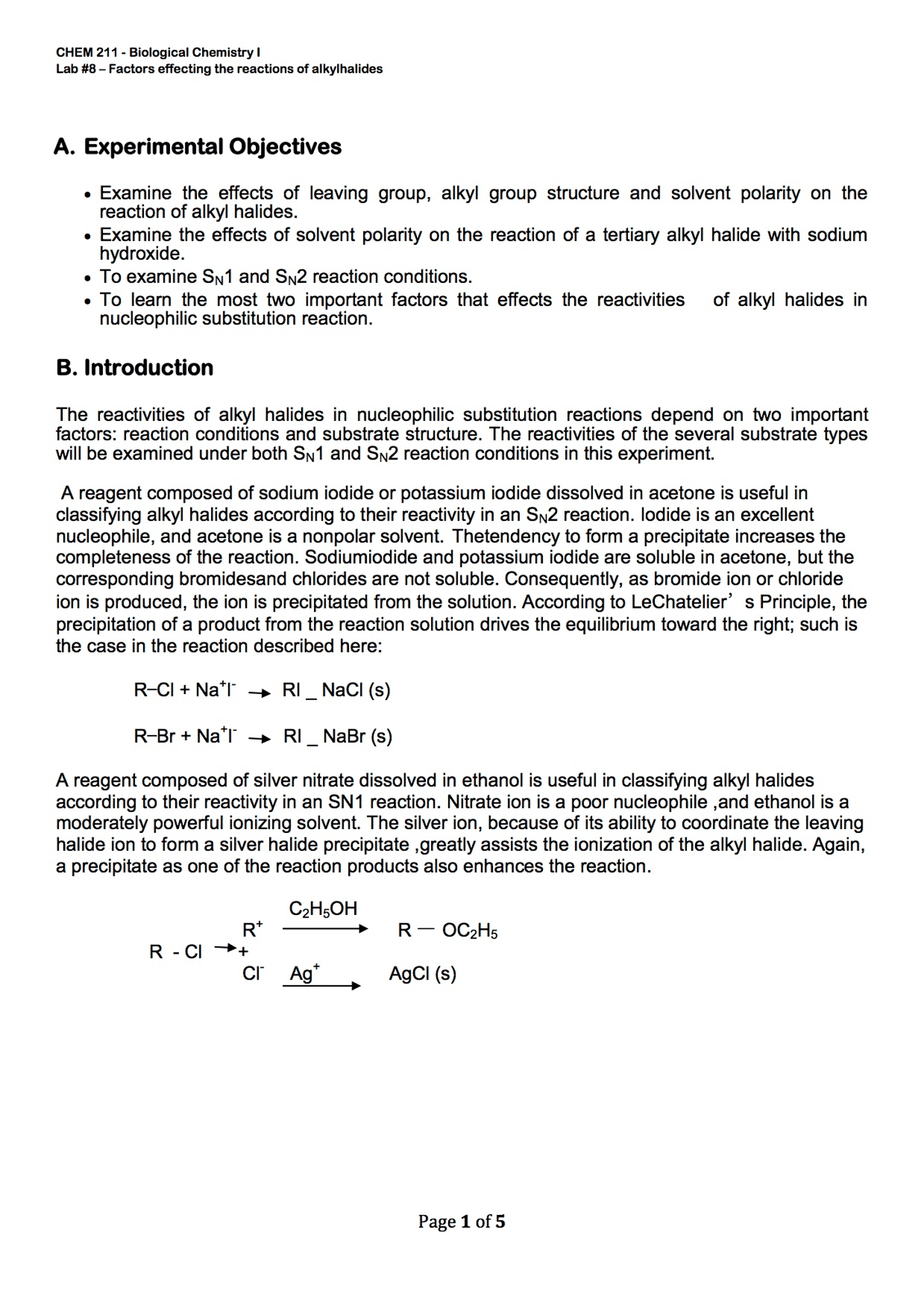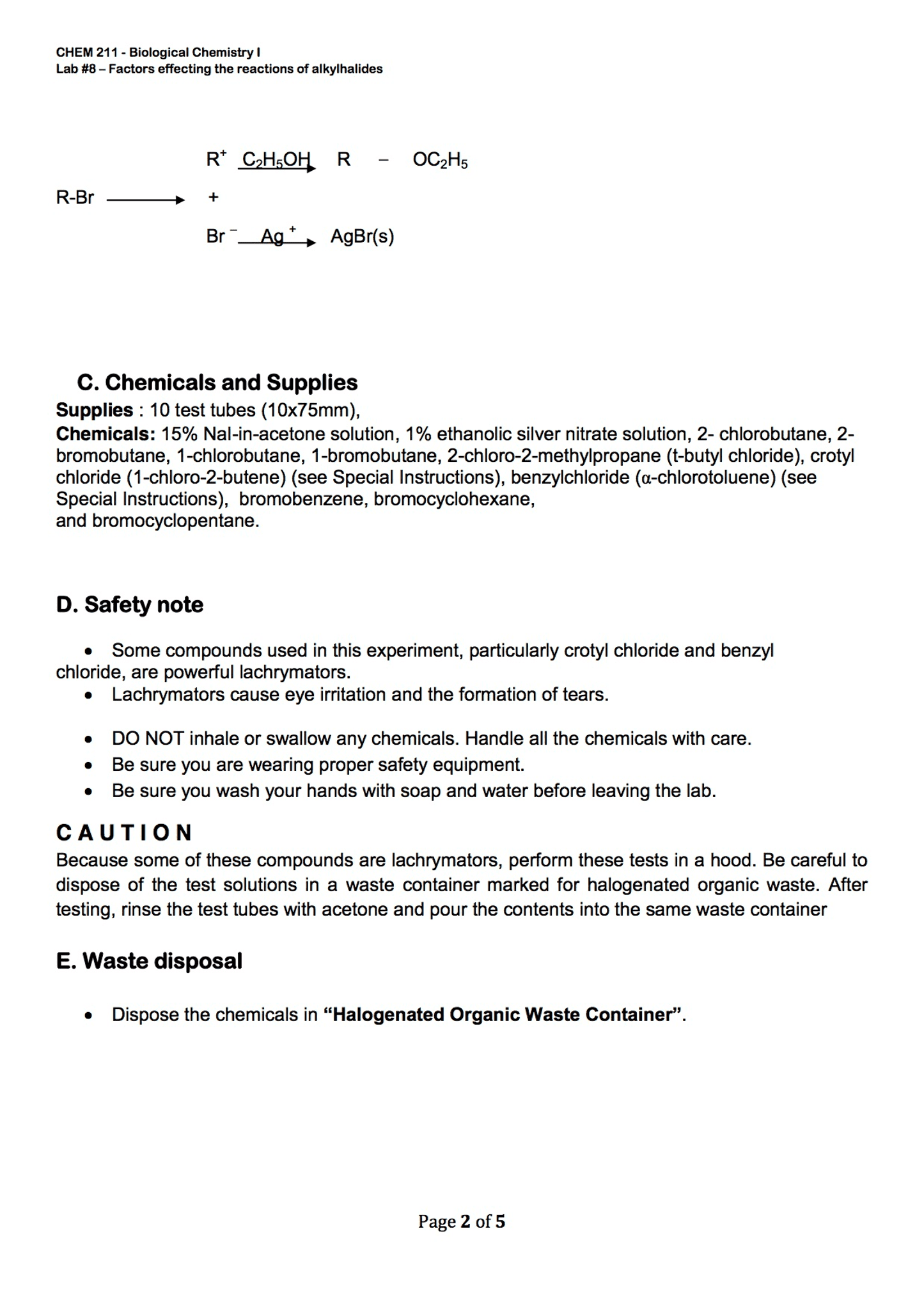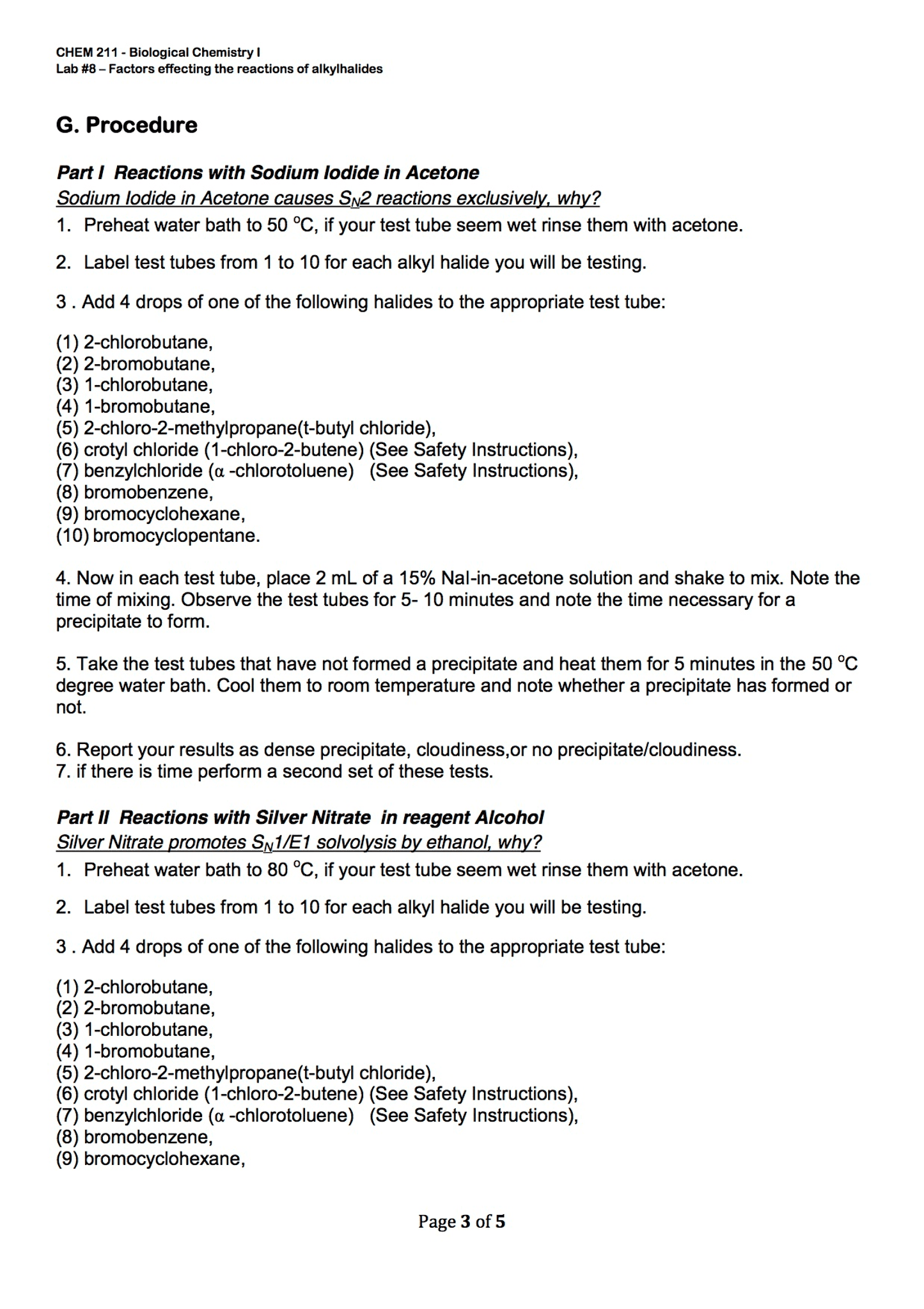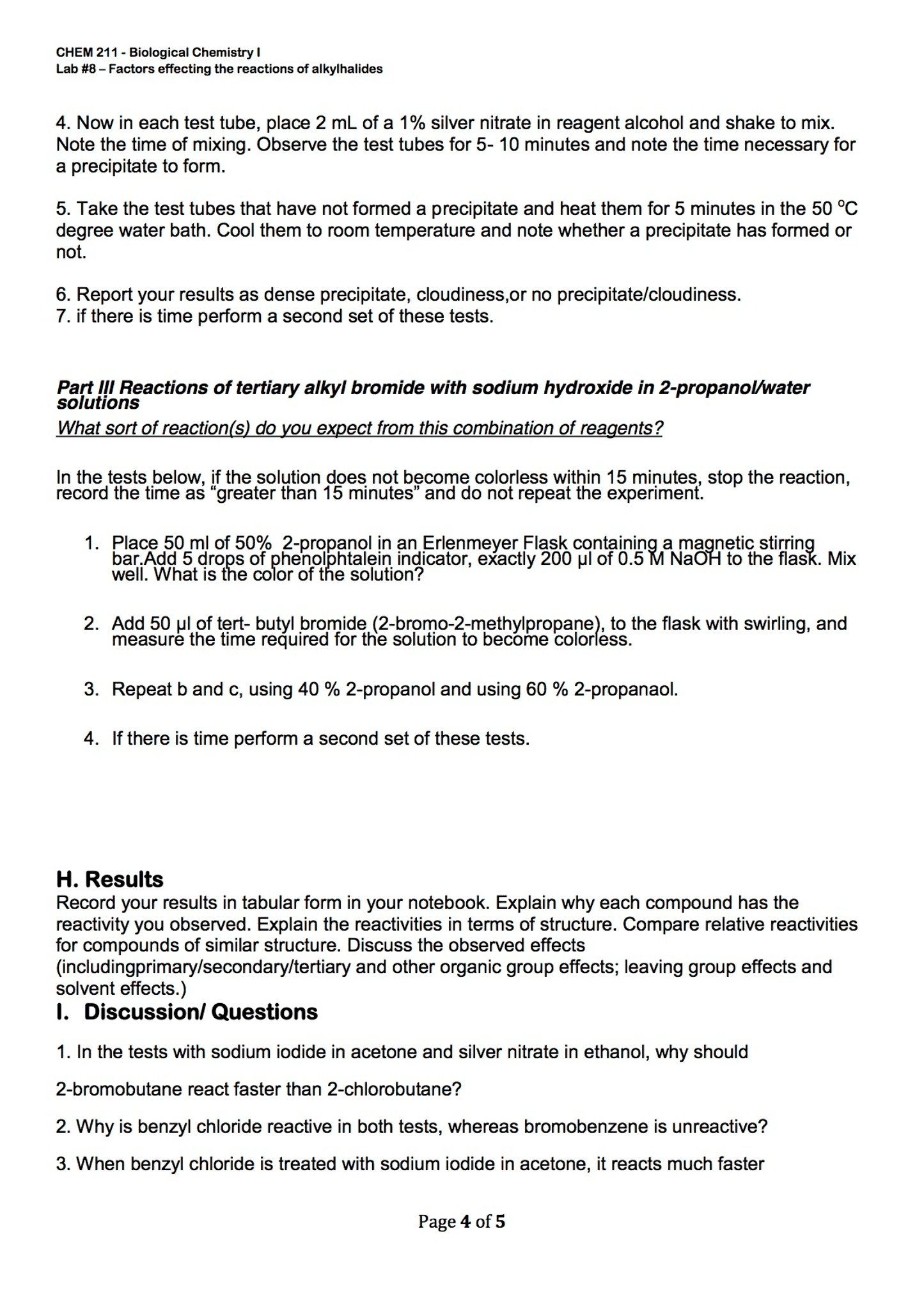CHMB41H3 Lecture Notes - Lecture 24: Nucleophile, Steric Effects, Leaving Group
Document Summary
Sn1 is a two step process - only substrate is important in rate determining reaction. In sn1 u want steric hindrance - electron induction & hyperconjuguation make it more stable & more reactive. You can through substrate in solvent & it would still happen because nucleophile doesn"t matter. It becomes a 3 step reaction: formation of cation, addition of water/nucleophile, loss of proton. In contrast sn2 would not really happen in water you would need a stronger nucleophile. Leaving group is the same in sn1 and sn2. It matters because it happens in the first reaction. The faster it leaves faster the reaction will happen. Tosolate group will have resonance and will be stable - stable base = best lg: larger in size easy to escape & most electronegative. Polar aprotic solvents are best solvents because they could not do h bonding and could not solve h ions. Sn2 has nucleophile with negative charge you want it to escape.





